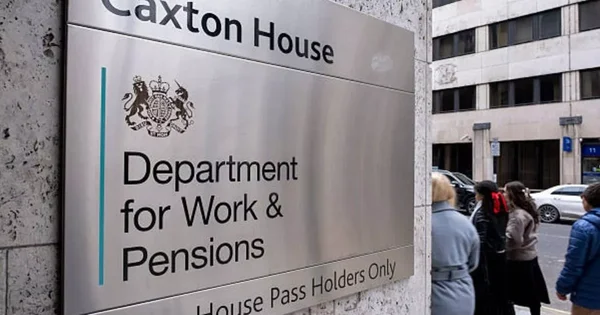Let’s Break This Down Together…
Wondering whether EIS or VCT is the better fit for your investment goals, and how they can actually help reduce your tax bill?
Understanding how tax relief schemes like the Enterprise Investment Scheme (EIS) and Venture Capital Trusts (VCTs) work is crucial for making smart, tax-efficient investment decisions. But with so many rules, acronyms, and tax advantages to juggle, it can get confusing fast.
That’s why we’ve created this step-by-step guide. We’ll walk you through how each scheme works, the key differences between EIS and VCT, and exactly how they can impact your income tax and capital gains.
Whether you're new to tax relief or looking to fine-tune your investment strategy — we’ve got you covered.
Let’s dive in!
EIS vs VCT Step by Step Guide: Introduction to Tax Relief Schemes
The Enterprise Investment Scheme (EIS) and Venture Capital Trusts (VCTs) offer significant tax benefits to encourage investment in early stage companies.
EIS and VCT are government-backed schemes offering tax benefits to investors in small companies.
Income tax relief and capital gains tax relief are key benefits of these schemes, reducing tax liability for investors.
Both EIS and VCT are designed to support smaller companies, which are typically higher risk but offer greater growth potential, and provide tax-free dividends and growth, making them attractive options for investors with higher risk tolerance.
Understanding the differences between EIS and VCT is crucial for making informed investment decisions.
Tax reliefs, such as income tax relief and capital gains tax relief, play a significant role in these investment schemes.
What is Tax Relief
Tax relief is a way for individuals and companies to reduce their overall tax liability, either through deductions, exemptions, or credits. In the context of investments, tax relief is designed to encourage investment in early stage companies by offering attractive tax benefits.
Schemes like the Enterprise Investment Scheme (EIS) and Venture Capital Trusts (VCTs) provide income tax relief, capital gains tax exemptions, and inheritance tax relief, making them appealing options for investors looking to support early stage businesses.
By claiming tax relief on qualifying investments, investors can effectively reduce the amount of income tax and capital gains tax they owe, increasing the overall return on their investments.
These government-backed initiatives are specifically structured to encourage investment in smaller, high-growth companies, helping to drive innovation and economic growth.
Understanding how tax relief works is essential for investors seeking to make tax-efficient investment decisions and maximise the benefits of their investment strategy.

What is the Enterprise Investment Scheme (EIS)
The Enterprise Investment Scheme (EIS) is a government initiative designed to encourage investment in early stage companies by offering a range of tax benefits to investors.
Through EIS, investors can invest directly in qualifying companies, supporting their growth while accessing income tax relief, capital gains tax exemption, and inheritance tax relief.
To qualify for EIS, a company must be a trading business with gross assets of less than £15 million and fewer than 250 employees at the time of investment.
EIS investments are particularly attractive for those looking to support early stage businesses and benefit from significant tax incentives, including the ability to offset investment losses against income tax.
By investing in EIS qualifying companies, investors can play a direct role in supporting innovation and entrepreneurship, while enjoying a more favorable tax treatment on their investments.
EIS Qualifying Companies and Investment
A qualifying company must meet specific criteria to be eligible for EIS investment, such as trading for at least four months and operating in various sectors with high growth potential.
The investor provides funding for business growth and development by investing directly in EIS qualifying companies.
EIS investments can be made in knowledge-intensive companies, which are eligible for increased investment limits.
The EIS scheme has specific rules and regulations, including a three-year period for holding EIS shares to retain tax reliefs.
Understanding the qualifying criteria for a qualifying company is essential for the investor to make informed decisions.

Benefits of EIS Investments and Capital Gains
EIS investments offer significant tax benefits, including income tax relief, capital gains tax relief, and inheritance tax relief.
Capital gains tax relief can be claimed on the disposal of EIS shares, providing a tax-free return on investment.
EIS investments also provide loss relief, which can be offset against income tax or capital gains tax.
The Seed Enterprise Investment Scheme (SEIS) provides additional tax benefits for investments in early stage companies.
EIS investments can provide significant tax savings, reducing income tax liability and capital gains tax.
However, investors should note that past performance of EIS investments does not guarantee future results, and all investments carry risks.
Comparison of EIS and VCT
Both EIS and VCT offer tax benefits, including income tax relief and capital gains tax relief, but have different investment structures.
VCTs are investment trusts listed on the London Stock Exchange, known as venture capital trusts, providing a diversified portfolio of investments. The
VCT scheme is a government-backed initiative designed to encourage investment in small, unquoted companies.
EIS investments can be made directly into individual companies, providing more control but higher risk.
VCT shares are valued based on their net asset value, which represents the total value of the trust’s assets minus its liabilities. VCT shares are often traded at a discount to their net asset value, reflecting their value and liquidity considerations.
VCTs offer tax-free dividends, while EIS investments provide tax-free growth and capital gains tax relief.
Understanding the differences between EIS and VCT is crucial for investors to make informed decisions.
Risks and Rewards of EIS Investment
EIS investments carry higher risk due to the early stage nature of the companies, but offer significant tax benefits and potential returns.
Investors should assess their risk appetite, risk tolerance, and financial goals before investing in EIS.
Professional advice is recommended to ensure that EIS investments align with individual circumstances and investment strategies.
EIS investments can provide significant rewards, including tax-free growth and capital gains tax relief, but also carry the risk of loss.
Investors should carefully consider the risks and rewards of EIS investments before making a decision.
You can claim EIS loss relief against your income tax, which is helpful if your investments do not perform as expected.

How EIS Shares Work
EIS shares are issued by qualifying companies, providing funding for business growth and development.
Once an investor has invested in EIS shares, they will receive a share certificate as proof of ownership.
The share certificate is required for claiming tax relief and for any future sale of the shares.
Investors can purchase EIS shares directly or through a fund, providing flexibility and diversification.
EIS shares must be held for a minimum of three years to retain tax reliefs, including income tax relief and capital gains tax relief.
The issuing company must meet specific qualifying rules throughout the three-year period to retain tax reliefs.
Understanding how EIS shares work is essential for investors to make informed decisions.
Tax Implications of EIS Investments
EIS investments have significant tax implications, including income tax relief, capital gains tax relief, and inheritance tax relief.
After investing in EIS-eligible shares, claiming relief involves receiving the EIS3 form from the company and submitting it to HMRC to formally claim the tax benefits.
Investors can claim tax relief by including the relevant information from the EIS3 form in their tax return.
Tax reliefs can be claimed on the investment, providing a reduction in tax liability.
EIS investments can also provide tax-free growth and capital gains tax relief, making them an attractive option for investors.
Understanding the tax implications of EIS investments is crucial for investors to make informed decisions.
Tax rules and regulations can change, so it’s essential to stay up-to-date with the latest information.
Venture Capital Trusts and Tax Relief
Venture Capital Trusts (VCTs) are investment trusts listed on the London Stock Exchange, providing a diversified portfolio of investments.
VCT tax relief is available to investors who meet the qualifying criteria, offering income tax relief and capital gains tax relief to encourage investment in small businesses.
To qualify for VCT tax relief, VCT shares must not carry preferential rights to dividends or assets upon winding up.
VCT shares provide tax-free dividends, making them an attractive option for investors seeking regular income.
SEIS shares also offer tax benefits similar to those available through VCTs and EIS, particularly in the context of inheritance tax relief.
VCTs have specific rules and regulations, including a five-year holding period to retain tax reliefs.
Understanding the tax relief available through VCTs is essential for investors to make informed decisions.

Final Thoughts
Tax-efficient investing involves strategically using tax reliefs and other tax benefits to reduce tax liability and maximise after-tax returns.
EIS and VCTs are prime examples of tax-efficient investments, offering income tax relief, capital gains tax exemption, and inheritance tax relief to investors who meet the qualifying criteria.
By incorporating these schemes into their investment portfolio, investors can achieve greater tax efficiency, effectively reducing the amount of tax paid on both income and capital gains.
Making tax-efficient investment decisions can have a significant impact on long-term financial goals, so it is important to consider the tax treatment of each investment.
Consulting with a professional adviser can help investors navigate the complex tax rules and ensure they are making the most of available tax reliefs to optimise their investment outcomes.
Investing in EIS and VCT requires careful consideration of individual circumstances, investment strategies, and risk tolerance.
Professional advice is recommended to ensure that investments align with financial goals and tax planning.
EIS and VCT investments can provide significant tax benefits and potential returns, but carry higher risk due to the early stage nature of the companies.
Investors should carefully evaluate the risks and rewards of EIS and VCT investments before making a decision.
A diversified investment portfolio can help mitigate risk and provide a balanced return on investment.
You can use software like the Pie Tax app to calculate the potential benefits of investing and claim eligible tax relief when filing your Self Assessment.









